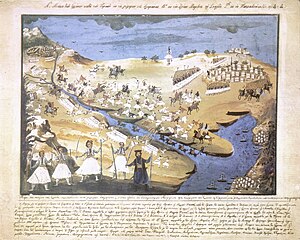
Markos Botsaris was a Souliot chieftain, general of the Greek revolutionary army and hero of the Greek War of Independence. He played a key role in relieving the First Siege of Missolonghi in 1822–1823 and was awarded the title of General of Western Greece by the revolutionary Greek government. He was killed during the Battle of Karpenisi and was buried in Missolonghi with full honors. Today Botsaris is among the most revered national heroes in Greece.

Athanasios Nikolaos Massavetas or Grammatikos also known as Athanasios Diakos was a Greek military commander during the Greek War of Independence, considered a venerable national hero in Greece.

The armatoles, or armatole in singular, were irregular soldiers, or militia, commissioned by the Ottomans to enforce the sultan's authority within an administrative district called an armatoliki. In Greek regions of the Ottoman Empire, they were composed of Greeks who were either former klephts or village stalwarts who had taken up arms against the klephts in the defense of their district.

Dimitrios Kallergis was a fighter of the Greek War of Independence, major general, politician and one of the most important protagonists of the 3 September 1843 Revolution.

Odysseas Androutsos was a Greek armatolos in eastern continental Greece and a prominent figure of the Greek War of Independence.
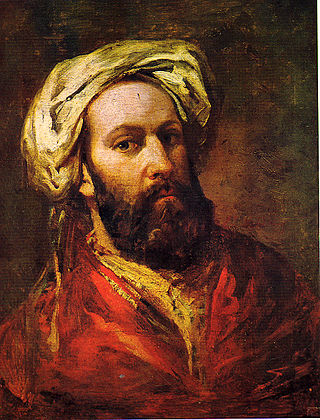
Vizier Omer Pasha Vrioni was an Ottoman Albanian military commander and ruler, and a prominent figure in the Greek War of Independence. He succeeded Ali as Pasha of Yanina.

Dimitrios Panourgias, a Greek military commander during the Greek War of Independence.
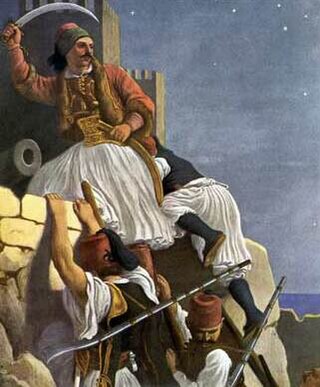
Athanasios Kanakaris was a Greek politician. He fought in the Greek War of Independence against the Ottoman Empire.
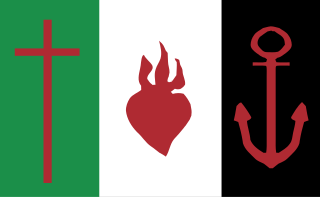
The Areopagus of Eastern Continental Greece was a provisional regime that existed in eastern Central Greece during the Greek War of Independence.

The Battle of Vasilika was fought between Greek revolutionaries and the Ottoman Empire during the Greek War of Independence.
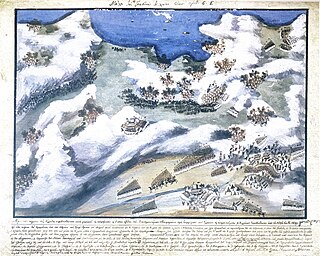
The Battle of Gravia Inn was fought between Greek revolutionaries and the Ottoman Empire during the Greek War of Independence. The Greek leaders Odysseas Androutsos, Yannis Gouras and Angelis Govios, with a group of c. 120 men, repulsed an Ottoman army numbering 8,000 to 9,000 men and artillery under the command of Omer Vrioni and Köse Mehmed. The battle ended with heavy losses for the Ottomans and minimal casualties on the Greek side.

Aristotelis Valaoritis was a Greek poet, representative of the Heptanese School, and politician. He was also the great-grandfather of Nanos Valaoritis, one of the most distinguished writers of Greece.
The 3rd Infantry Division was an infantry division of the Hellenic Army.
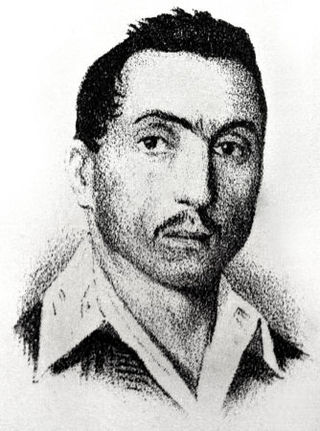
Christos Palaskas was a Greek chieftain during the Greek War of Independence. He was killed by Odysseas Androutsos’s men, during an internal conflict.
Dimitrios Papatsonis was a fighter of the Greek War of Independence from the Peloponnese. He was killed at the age of 27 in June 1825 during the battle of Trikorfa against the Egyptian forces of Ibrahim Pasha of Egypt.
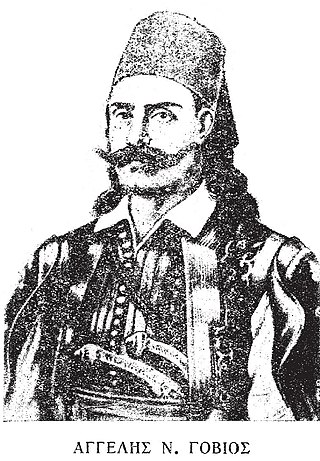
Angelis Govios or Govginas was a leader of the Greek War of Independence. He is known for the reorganization of the Struggle against the Ottomans in Euboea. A statue in his honour has been erected near the Euboean town of Psachna.

The Apotheosis of Athanasios Diakos is an oil painting by Konstantinos Parthenis created in 1933.
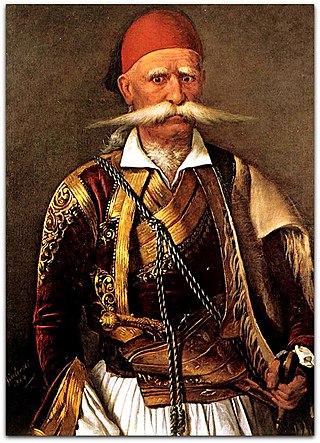
Yiannis Xykis, more commonly known as Dyovouniotis, was a Greek chieftain in Roumeli and a hero of the Greek War of Independence.

Bishop Isaiah of Salona was a Greek cleric. He was the first bishop who died fighting in the Greek Revolution of 1821.

Ilias Mavromichalis or Bezande-Ilias was a fighter of the Greek Revolution of 1821 and scion of the historic family of Mavromichali. He went down in history as the "Fairyborn" chieftain due to his beauty - which according to popular tradition he inherited from his grandmother.
